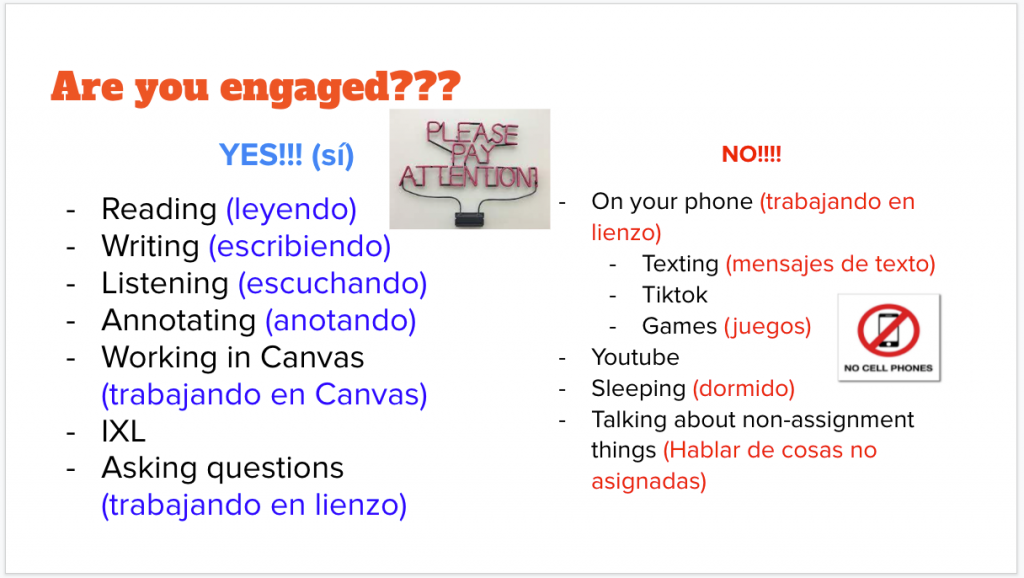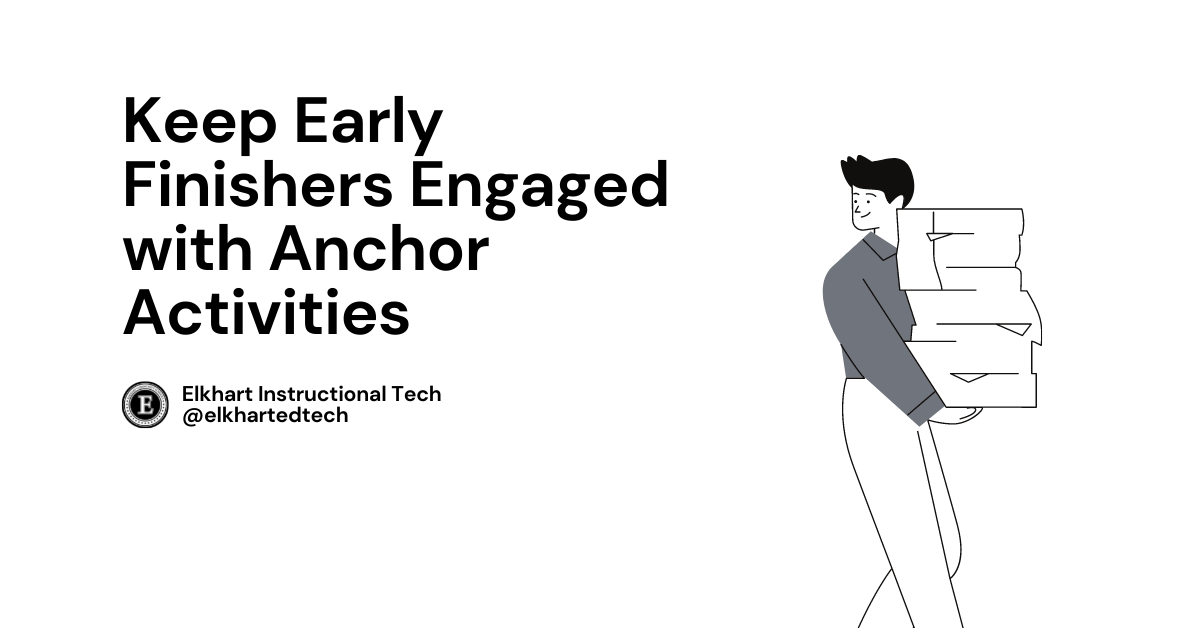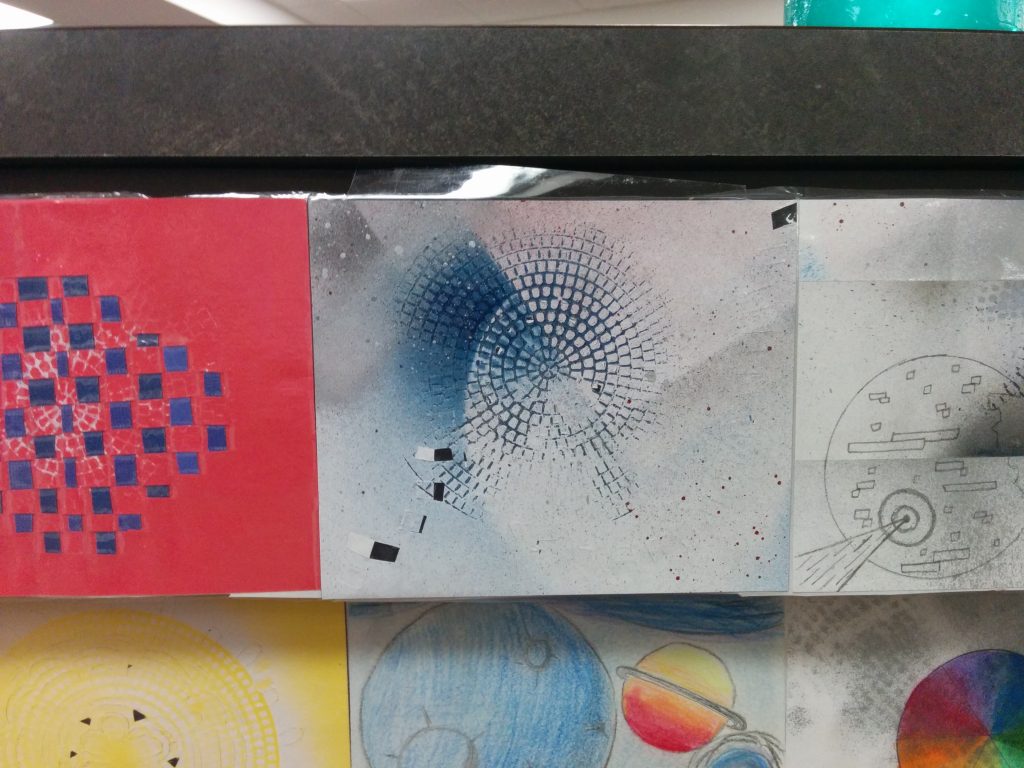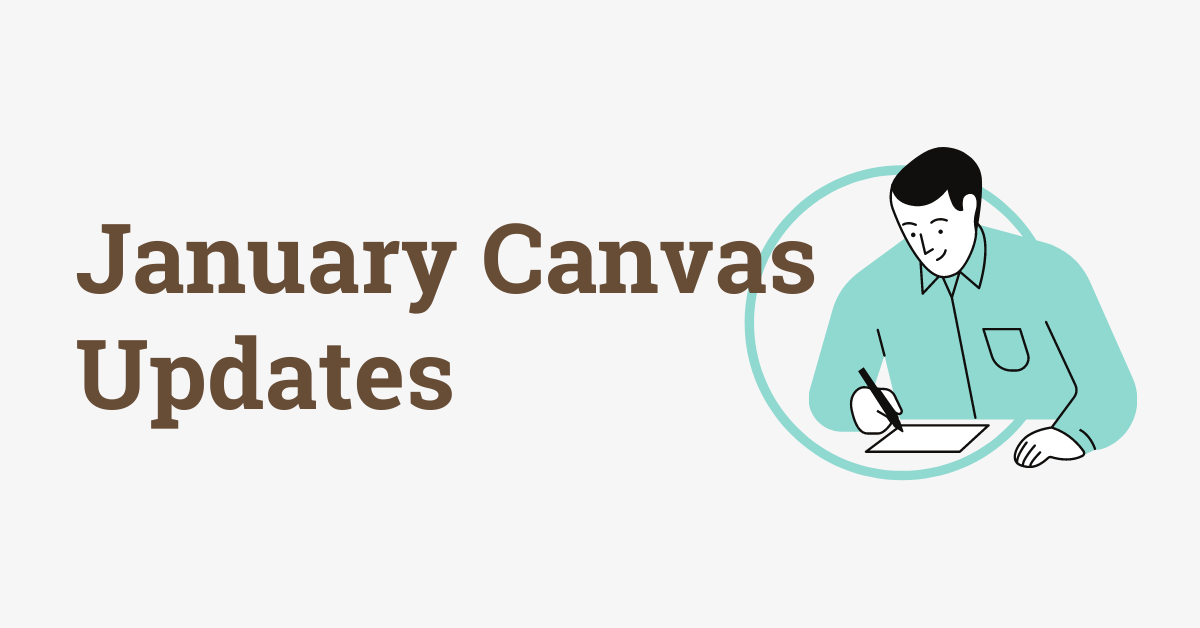After completing Module 18 in SIOP, I’ve been thinking a lot about student engagement. Obviously, we all do our very best to engage students, but sometimes it is very difficult to do. A lot of times we think that how students engage in our classes is common sense, but common sense isn’t always so common! To help my students see exactly what I expect, I made a slide that is always on my board during classwork.

A simple slide like this helps direct student energy toward productive classroom habits.
I realized that if a student was struggling and needed an intervention, I was able to find things to try to keep them engaged. It’s easy to have them do a missing assignment or suggest a skill to practice. However, what I tend to struggle with the most is helping students who need enrichment.
Anchor Activities
Anchor Activities are a great way to redirect student energy when they are finished with the immediate task. If you’ve never heard of an Anchor Activity, it’s a go-to activity students can work on when they finish work during class. The trick is to make sure that anchor activities aren’t busy work – they should connect with larger ideas being discussed in class or extend and elaborate on the topic at hand.

Aside from providing constructive ways to participate in class, anchor activities are an easy way to allow students choice in their learning. The activities, while broad in scope, can be adjusted and accommodated to meet students where they are. For students learning English, this could be something which helps them build their content objective vocabulary. For others, it may just be a way to provide a creative outlet which demonstrates their understanding of the material.
Putting it into Practice
As a practical step, I decided to add a link on Canvas with suggestions of things students could work on. I include this at the end of my agenda so it is always there. Students have options that include reading or researching things we are discussing in class. I have found that it helps all students know exactly what is expected of them, and it works for all students regardless of their current learning level because their exploration is self-directed.
Take a few moments to look at your curriculum, especially your Big Ideas and Essential Questions. Remember, Big Ideas are answers to Essential Questions and students should be able to articulate and expand on those answers as they learn. Ask yourself,
- How do my students demonstrate learning?
- What other areas could they dive into on their own?
- What tools can they use to show deeper understanding?
By recognizing areas for expansion, you’re able to provide more flexible and engaging anchor activities to students throughout the year. Change them up based on unit and be open to student suggestions for ways they want to explore your content more deeply.




Thanks for connecting back to SIOP Module 18. Engagement is that “extra” thing that teachers don’t always have time to think about. Lots of great suggestions here!